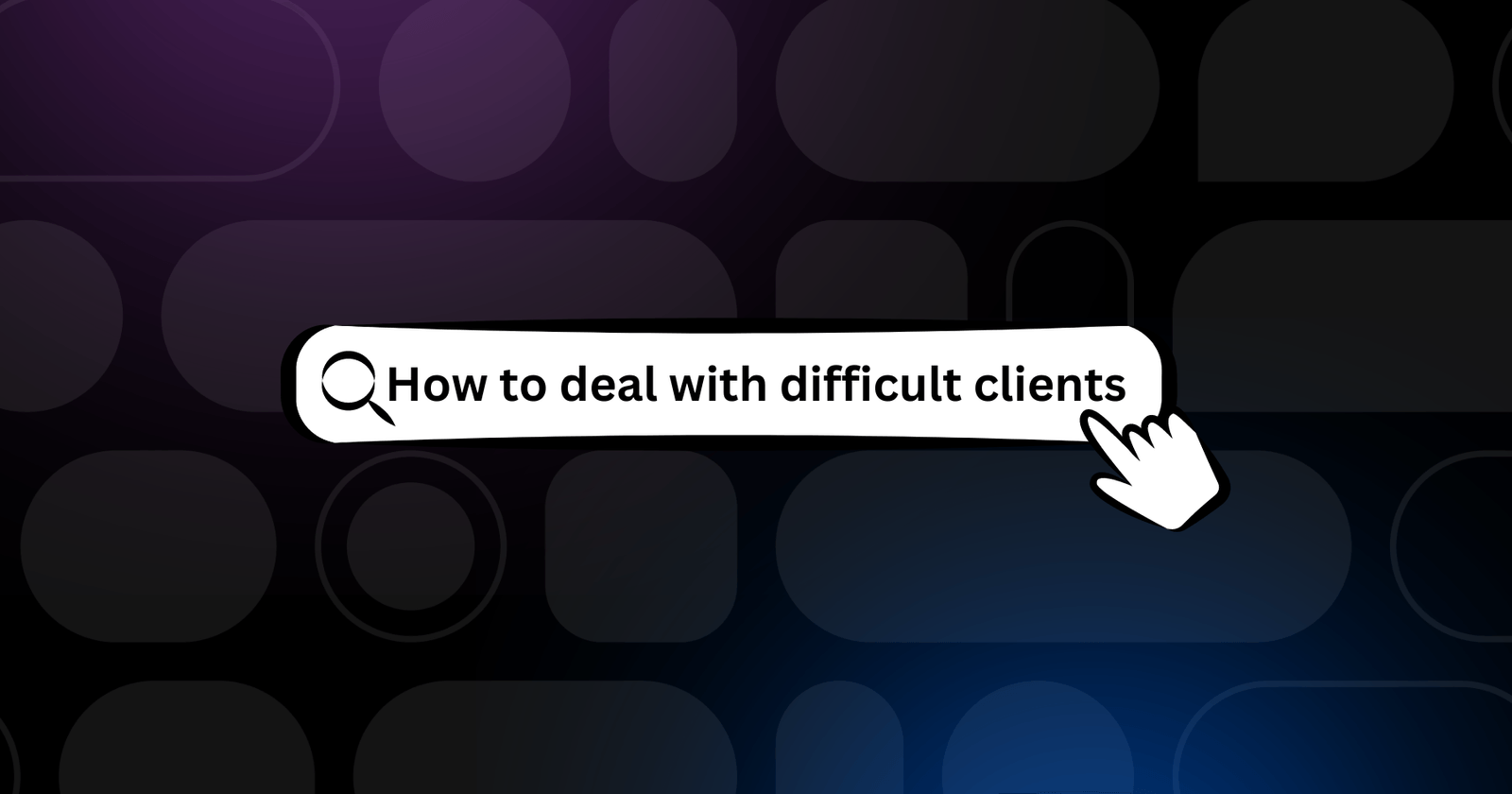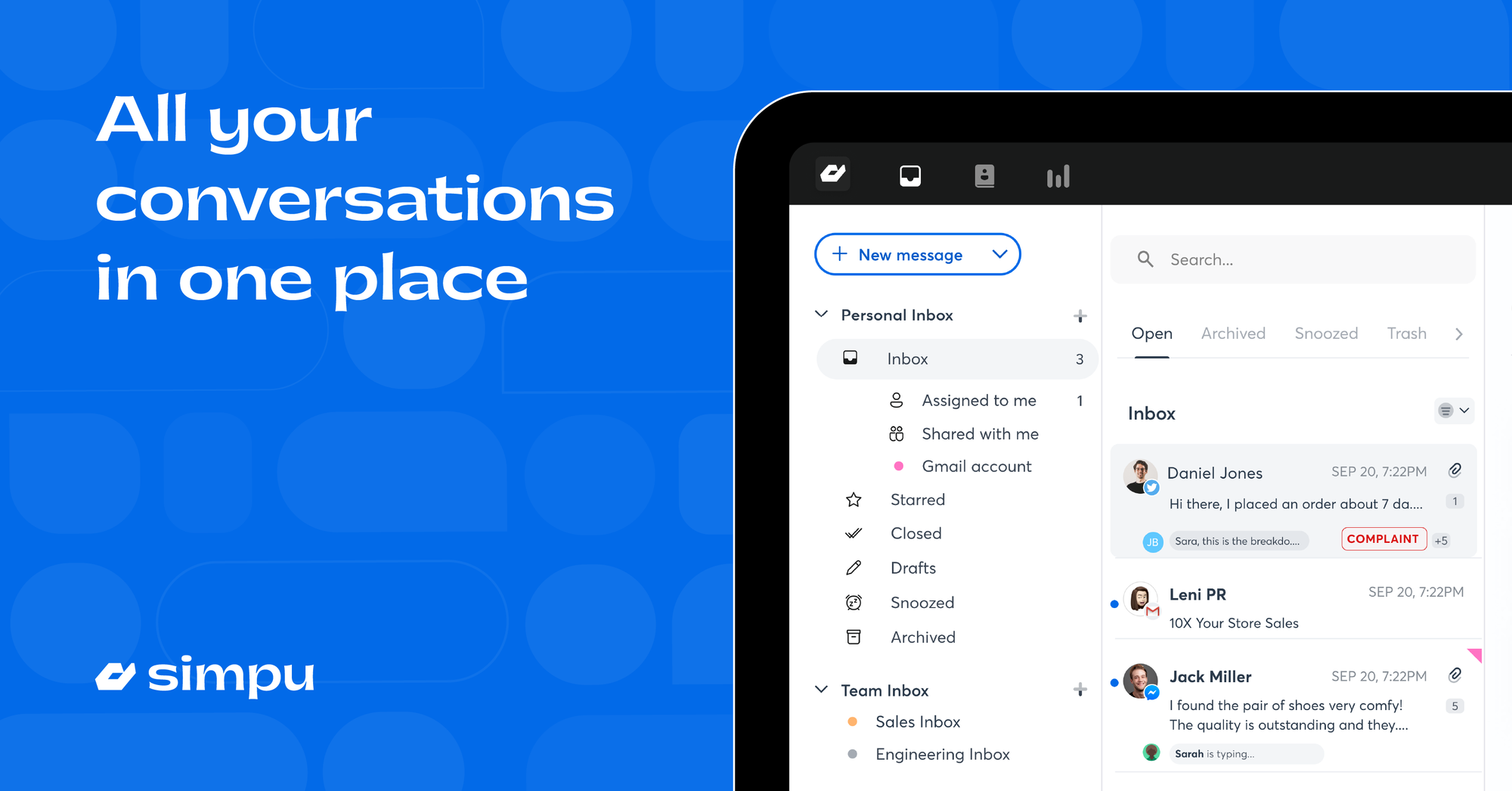You're a customer support representative handling inquiries for a popular tech company. One day, you receive a call from a frustrated customer who has just received the wrong laptop model they ordered.
They're upset and want a quick resolution. As you listen to their concerns, your ability to communicate effectively becomes crucial.
However, working in customer support today comes with its own set of challenges.
Remote communication can introduce complications such as time zone differences that delay responses, technology barriers that disrupt conversations, and the absence of face-to-face interactions, making it harder to convey empathy.
As a customer support worker, maintaining a unified approach across distributed teams is essential to overcoming these obstacles and ensuring consistent messaging.
In this blog post, we'll explore the vital role of effective communication in customer support, discuss the challenges faced in remote interactions, and share strategies for ensuring consistency in your messaging.
Understanding customer expectations.
Customer expectations help shape their experiences and satisfaction levels. Response times, availability, and personalization are two key areas influencing these expectations.
Response times and availability
A study by SuperOffice shows that nearly half of all customers (46%) using email expect a response within 4 hours, while 12% demand a reply within 15 minutes or less. The average response time for companies is around 12 hours, some taking longer than 8 days to respond.
For chat and phone, service requests should ideally be acknowledged within 30-60 minutes, with a commitment to start addressing issues based on priority levels.
For example, priority one tickets might have a response time of one to two hours, while lower priority tickets could extend to 24 hours.
To effectively manage customer expectations, businesses should inform customers about expected response times during the initial interaction and through service agreements. This includes outlining after-hours policies and prioritizing requests.
Explain the prioritization system so customers understand why some requests may take longer than others. Setting these expectations helps manage customer satisfaction and reduces service teams' stress by minimizing follow-up inquiries.
Personalization
Using a customer's name in communications fosters a personal connection and enhances the overall experience. Understanding their history allows for more tailored solutions that meet specific needs.
Empathy is also crucial in remote communications. Acknowledging customer frustrations and showing understanding can significantly improve customer satisfaction.
This approach helps build trust and loyalty, as customers feel valued and appreciated. Empathy in customer service leads to better relationships and can differentiate a brand in a competitive market.
Customers are more likely to recommend brands that demonstrate excellent service, which includes prompt responses and personalized interactions.
Best practices for remote customer communication.
Clear and concise communication.
Avoid jargon and complex terminology that may confuse customers. Use straightforward language to ensure clarity.
Aim for a friendly yet professional conversational tone, making it easier for customers to engage with your messages.
To structure your responses, start with a warm greeting to set a positive tone. Clearly state the purpose of your message.
This helps customers quickly understand the context. Also, provide specific steps the customer should take or what they can expect next.
This clarity helps manage their expectations effectively. End with a polite closing statement, inviting further questions or expressing appreciation for their engagement.
Tone and language.
Effective communication in customer service hinges on tone and language. Use affirmative phrases that highlight what can be done rather than what cannot.
For example, say, "I'd be happy to assist you with that" instead of "I can't do that." Reinforce positive outcomes by expressing optimism. Phrases like "I'm confident we can resolve this together" can uplift the conversation.
Incorporate polite phrases such as "please","thank you", and "I appreciate your patience." This shows respect for the customer’s time and feelings. When customers express frustration or dissatisfaction, acknowledge their feelings with statements like, "I understand how that could be frustrating." Maintain a respectful tone throughout all interactions, avoiding slang or overly casual expressions that may undermine professionalism.
Consider the age, industry, and cultural background of the customer. Younger customers may appreciate a casual tone, while corporate clients might expect a formal approach.
Use insights from past communications to gauge the appropriate level of formality. A long-term customer may prefer a friendly tone compared to a first-time buyer.
Consistency across channels.
Maintaining a consistent tone and message across various communication channels‚ emails, calls, chats, and social media's vital for building brand trust and recognition. Establish a clear brand voice that reflects your company's personality.
Define the core attributes of your brand voice (e.g., friendly, professional, informative) and document these in a tone of voice guide. This guide should include examples and specific language to use or avoid in different contexts.
While the brand voice remains constant, the tone can vary slightly based on the audience or content type. For instance, social media interactions may be casual and engaging, while emails may adopt a more personal and conversational tone.
Train your team to adjust their communication style based on the platform and audience expectations, ensuring that the essence of the brand voice is preserved while appropriately tailored to each situation.
Create a detailed tone of voice document as a reference for all team members involved in customer communication. This document should outline voice characteristics, examples of appropriate language, and do's and don'ts for different channels.
Make this document easily accessible through cloud-based solutions like Google Drive or an internal intranet so all team members can refer to it when crafting messages.
Utilizing technology for seamless communication.
Businesses can create a seamless communication experience that enhances customer satisfaction while ensuring consistent messaging across all channels. Some strategies and tools can help businesses achieve effective communication.
Tools for efficient remote communication.
Slack
Slack is a collaboration tool designed for team communication. It enables real-time messaging, file sharing, and integration with various applications.
Teams can communicate quickly and efficiently, reducing response times to customer inquiries by discussing issues in dedicated channels.
Slack can be integrated with CRM systems to receive real-time updates on customer interactions and support tickets, ensuring that all team members are informed and can respond promptly.
It allows for creating channels specifically for customer support, where team members can collaborate on resolving customer issues.
Zoom
Zoom is a video conferencing platform that facilitates virtual meetings, webinars, and screen sharing.
The platform enables businesses to maintain a personal touch through video calls, enhancing client relationships and providing more effective support.
Companies can conduct webinars to educate customers about products or services, fostering engagement and understanding.
This feature allows support representatives to guide customers through troubleshooting processes or product demonstrations in real time.
CRM systems
CRM systems centralize customer data and interactions across various channels, providing a comprehensive view of customer relationships.
They store detailed information about customer interactions, preferences, and purchase history.
This centralization allows customer service representatives to provide personalized support based on complete context.
The systems facilitate communication across multiple channels‚ email, phone, and social media‚ ensuring consistent messaging and a unified customer experience.
Many CRMs include automation tools that streamline repetitive tasks such as follow-up emails or ticket management, allowing teams to focus on more complex customer needs.
Best practices for phone, email, and chat.
Phone etiquette
Speak clearly and at a moderate pace to ensure the customer understands you. Avoid mumbling or speaking too quickly. A warm and friendly tone can help put customers at ease and create a positive interaction.
Allow customers to express their concerns fully before responding. This shows respect for their input and helps you understand their needs better.
Resist the urge to interrupt or finish their sentences. Instead, wait for natural pauses to ask clarifying questions or provide solutions.
Use a concise subject line that summarizes the email's content, making it easy for the recipient to understand the purpose at a glance.
Structure your email with a greeting, a clear introduction, main points in bullet or numbered lists (if applicable), and a closing statement.
Aim to respond to emails within 24 hours, even if it's just to acknowledge receipt and indicate when a more detailed response will follow. Identify and prioritize emails that require immediate attention to ensure critical issues are addressed promptly.
End with a professional sign-off such as"Best regards", "Sincerely," or "Thank you." Include your name and relevant contact information. Encourage further engagement by asking questions or assisting with your closing lines if applicable.
Chat
Provide clear answers without unnecessary elaboration. Aim for brevity while ensuring all necessary information is conveyed. When providing multiple pieces of information, use bullet points for easier readability.
Maintain a conversational tone that feels approachable while still being professional. Use simple language that is easy to understand.
Empathetically acknowledge customer feelings or frustrations, reinforcing that you value their concerns.
Consider using emojis sparingly in less formal settings or with familiar customers to convey friendliness and warmth. However, avoid overuse or any that may be misinterpreted.
Automation and AI support.
The integration of automation and AI in customer communication has transformed how businesses handle inquiries, using chatbots and AI-driven systems.
These technologies can efficiently manage frequently asked questions (FAQs) and route complex queries to human agents while maintaining a personal touch.
Chatbots can quickly respond to common questions related to account status, product features, or service hours. This reduces the workload on human agents and allows them to focus on more complex issues.
Unlike human agents, chatbots can operate around the clock, providing immediate assistance to customers regardless of time zones or business hours. This enhances customer satisfaction by ensuring help is always available.
Advanced chatbots can identify when a query is too complex for automated responses. They can then seamlessly transfer the conversation to a human agent, ensuring that customers receive the appropriate level of support.
Active listening and empathy in customer service.
Active listening and empathy are crucial to effective customer service, especially in a remote environment. These skills help build rapport, enhance understanding, and foster positive customer relationships.
How to listen effectively in a remote environment.
Close unnecessary tabs, silence notifications, and create a dedicated space for customer interactions to focus on the conversation fully.
Use video when possible. Video calls can enhance engagement and help you pick up on non-verbal cues, making it easier to connect with customers.
Ask questions that encourage customers to elaborate on their concerns. For example, "Can you tell me more about the issue you're experiencing?‚" This invites them to share more details and demonstrates your interest in understanding their perspective.
Show that you are actively engaged by nodding (if on video) or using verbal affirmations like ‚"I see‚" or ‚"That makes sense." This encourages customers to continue sharing their thoughts.
Demonstrate empathy
Acknowledge the customer's feelings using phrases such as "I understand that this situation is frustrating for you" or "It's completely understandable to feel this way." This shows that you recognize their emotions and care about their experience.
Avoid phrases that may minimize their feelings, such as “It’s not a big deal” or “You shouldn’t worry about it.” Instead, validate their concerns by expressing genuine understanding.
Handling difficult situations and conflict resolution.
Deal with upset customers kindly
Take a moment to collect your thoughts before responding. This helps you remain calm and prevents emotional reactions that could escalate the situation further.
Speak in a calm, steady voice to convey professionalism and reassurance. This can help soothe an upset customer.
Allow the customer to express their feelings without interruption. Show that you are genuinely listening by nodding or using verbal affirmations. Use empathetic language, such as "I understand why you're upset, to validate their emotions and demonstrate that you care."
Ask open-ended questions to uncover the underlying issue. Understanding the core problem allows you to address it more effectively. Example: "Can you explain what led to this issue? I want to ensure we address it properly."
Provide clear solutions and follow-up
Communicate the steps you will take to resolve the issue, including timelines for when they can expect results. This transparency helps manage expectations. Example: "I will escalate this issue to our technical team, and you can expect an update within 24 hours"
Before concluding the conversation, summarize the agreed-upon solutions and next steps to ensure both parties are aligned. Example: "To recap, we will send you a replacement product by Friday, and I'll follow up with you then.‚"
Reach out after the resolution has been implemented to check in with the customer. This shows that you value their experience beyond just resolving the immediate issue. Example: "I wanted to follow up regarding your recent experience. Did everything go as expected?,"
Encourage customers to provide feedback on the resolution process and their overall experience. This helps improve future interactions and reinforces that their opinions matter.

Building long-term customer relationships.
Encouraging ongoing engagement
Use customer data and behavior analytics to identify opportunities for cross-selling (offering related products) and upselling (offering upgraded versions). This requires a deep understanding of your products and customers' preferences.
Tailor your offers based on individual purchase histories and preferences. For instance, if a customer buys a smartphone, suggest complementary accessories like cases or screen protectors.
Send targeted emails or notifications to inform customers about new products, services, or promotions. This helps maintain their interest and encourages repeat purchases.
Implement loyalty programs that reward customers for repeat business. Offering exclusive discounts or early access to new products can incentivize ongoing engagement.
Feedback loops
Actively solicit feedback through surveys after purchases or via follow-up emails. Ask specific questions about their experience to gather actionable insights.
Monitor social media platforms for customer comments and reviews. Respond to their positive or negative feedback to engage with customers.
Use the feedback collected to make necessary improvements to products or services. Communicate these changes to customers to show their opinions are valued.
After addressing feedback, follow up with customers to inform them of the changes made based on their input, reinforcing that their voices matter.
Regular training and development
Conduct regular training sessions for staff to keep them updated on product knowledge, customer service best practices, and new technologies.
Incorporate role-playing exercises in training sessions to simulate difficult customer interactions.
This prepares staff for real-life situations and enhances their problem-solving skills.
Encourage team members to share insights from customer interactions during meetings.
This fosters a culture of continuous improvement within the team. Use performance metrics and customer feedback as part of employee evaluations to identify areas for growth and development.
Conclusion
Effective communication is the cornerstone of successful customer interactions.
Businesses can foster trust and understanding by actively listening, responding clearly, and maintaining a positive tone across all channels—whether it be phone, email, or chat.
This not only helps in addressing customer concerns promptly but also enhances their overall experience.
A strong customer focus ensures that businesses prioritize their clients' needs and preferences. This approach drives customer loyalty and encourages ongoing engagement through cross-selling and upselling opportunities.
Consistency across all communication channels reinforces brand reliability and professionalism.
Customers who receive uniform messaging and service quality are more likely to feel valued and respected. This consistency builds confidence in the brand, encouraging customers to return and recommend the business to others.
Get started on a 14 days free trial of Simpu's shared inbox.

Shared Inbox
Connect all your communication channels - email, SMS, Whatsapp, Instagram, Messenger, and Live Chat to one inbox.









